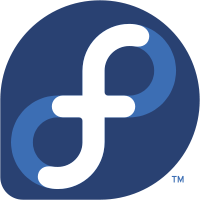We are still actively working on the spam issue.
Difference between revisions of "Fedora"
m |
Muh6trillion (talk | contribs) m |
||
| Line 1: | Line 1: | ||
| − | |||
| − | |||
[[File:fedora_logo.png|thumb|The Fedora GNU/Linux Logo.]] | [[File:fedora_logo.png|thumb|The Fedora GNU/Linux Logo.]] | ||
| Line 89: | Line 87: | ||
==External Links== | ==External Links== | ||
| − | + | [https://fedoraproject.org/wiki/Fedora_Project_Wiki Fedora Project Wiki] | |
[https://fedoraproject.org/wiki/How_to_create_an_RPM_package How to create an RPM package] - Details packaging in Fedora, recommended you use [https://fedoraproject.org/wiki/Using_Mock_to_test_package_builds Mock] to build. | [https://fedoraproject.org/wiki/How_to_create_an_RPM_package How to create an RPM package] - Details packaging in Fedora, recommended you use [https://fedoraproject.org/wiki/Using_Mock_to_test_package_builds Mock] to build. | ||
[[Category:GNU/Linux]] | [[Category:GNU/Linux]] | ||
Revision as of 18:50, 10 February 2014
Fedora is a fast, stable, and powerful GNU/Linux distribution for everyday use built by a worldwide community of friends. It's completely free to use, study, and share.
Contents
Why use Fedora?
- Default repos only contain free software
- More bleeding edge software
- RHEL-based
New users
If you're new to GNU/Linux and you want to use Fedora then an excellent place to start is easyLife. It sets up essential software, installs some commonly used proprietary software (emphasis on installing propriety software, however, you can customize to not include non-free packages with your installation), installs codecs, installs and configures Adobe Flash, sets up proprietary drivers, sets up Oracle Java and much more. It's only recommended if you are an inexperienced user or if you're REALLY lazy.
Basic setup
Although the default Fedora installation contains most of the packages the average user needs, it's always useful to install the following essentials that are sadly not packaged with Fedora by default:
sudo yum install wget nano git gcc clang gnome-tweak-tool vim -y
Codecs
By default, Fedora doesn't have a lot of codecs installed. You can fix this by running:
sudo yum install gstreamer{1,}-{ffmpeg,libav,plugins-{good,ugly,bad{,-free,-nonfree}}} ffmpeg -y
You'll have to install RPMFusion if you want non-free codecs, as they will not be installed this way when only using the default repositories.
How to use yum
Yum is very easy to use compared to Aptitude, Pacman etc. It has three basic commands that you need to remember:
- yum install
- yum search
- yum remove
Basics
The yum command supports a range of wildcards and other options. For example, to install all the gstreamer plugins, you can run the following command:
yum install gstream*plugin*
The commonly used -y flag will skip the confirmation process and yum will assume yes for most questions.
RPMFusion
The RPMFusion repos add non-free software to Fedora. This includes a lot of codecs, steam, etc. Installing RPMFusion is extremely easy:
sudo -c 'yum localinstall --nogpgcheck http://download1.rpmfusion.org/free/fedora/rpmfusion-free-release-$(rpm -E %fedora).noarch.rpm http://download1.rpmfusion.org/nonfree/fedora/rpmfusion-nonfree-release-$(rpm -E %fedora).noarch.rpm'
Flash
Flash is not installed by default and is officially not recommended due to the fact that it's non-free software. If you do wish to install the Flash player plugin anyway, follow the steps listed below.
Firefox
After you have Firefox working properly (you can install it using yum):
Install The Plugin
sudo rpm --import /etc/pki/rpm-gpg/RPM-GPG-KEY-adobe-linux sudo yum install flash-plugin -y
Verify Your Installation
To verify that Adobe Flash has been installed successfully, type the following text in the Firefox address bar:
about:plugins
For further verification, navigate to the Adobe Flash Test Page. There, you should be able to see whether or not Adobe Flash if working properly.
Installing the plugin on Chromium web browser
Follow all of the instructions in the Enabling Flash Plugin section. Then, on 64-bit, create a symbolic link that tells Chromium how to find the 64-bit plugin:
sudo ln -s /usr/lib64/mozilla/plugins/libflashplayer.so /usr/lib64/chromium-browser/plugins/libflashplayer.so
On 32-bit, create a symbolic link that tells Chromium how to find the 32-bit plugin:
sudo ln -s /usr/lib/mozilla/plugins/libflashplayer.so /usr/lib/chromium-browser/plugins/libflashplayer.so
Exit all Chromium windows and restart Chromium. In the Chromium address bar, type "about:plugins" to check whether the plugin loaded. You may have to re-run Chromium with the --enable-plugins command line switch to force Chromium to re-scan its plugins folder.
Installing Gnash
In addition to Adobe Flash, a free and open source alternative exists called Gnash. Gnash plays Flash videos correctly, but audio is often in a proprietary MP3 format. Since Gnash uses Gstreamer, you can install the Gstreamer codecs from RPM Fusion:
sudo yum install http://download1.rpmfusion.org/free/fedora/rpmfusion-free-release-stable.noarch.rpm http://download1.rpmfusion.org/nonfree/fedora/rpmfusion-nonfree-release-stable.noarch.rpm -y
sudo yum install gstreamer{1,}-{ffmpeg,libav,plugins-{good,ugly,bad{,-free,-nonfree}}} ffmpeg -y
Gnash is very modular and includes plugins for Mozilla and Konqueror as well as a desktop player. You likely want the Mozilla plugin.
sudo yum remove nspluginwrapper -y sudo yum install gnash-plugin -y
If you use Konqueror as your web browser,
sudo yum install gnash-klash -y
If you would like to have a desktop flash player,
sudo yum install gnash -y
External Links
Fedora Project Wiki How to create an RPM package - Details packaging in Fedora, recommended you use Mock to build.
